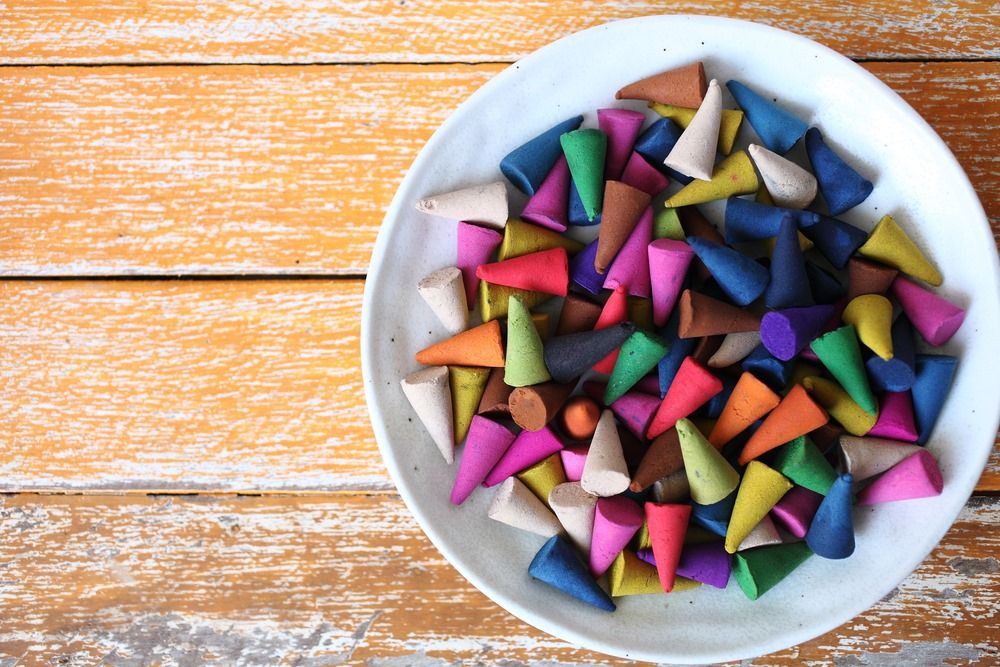Backflow Incense Cones Vs. Regular: Choose the Best Aromatherapy Option
Incense cones are a popular choice for fragrance and aromatherapy in many households. However, not all incense cones are created equal. There are two main types: backflow cones and regular incense cones.
To understand the difference between these two types, it’s important to know that backflow cones have a unique feature – a small hole in the center that causes the smoke to flow downwards, creating a mesmerizing waterfall-like effect.
On the other hand, regular incense cones do not have this feature and burn in the traditional way.
Are All Incense Cones Backflow?
Incense cones are made by combining a small amount of water with powdered incense and mixing it to make a clay-like dough, which is the pressed into a mold to form a cone.
When an incense cone is burned, the smoke drifts up into the air like any other types of incense, like sticks or coils.
Some cones, however, have a small hole drilled from the base to the top, and this makes the smoke actually drift downwards, not up. These are called backflow cones, and are used for decorative effects with incense burners.
The smoke from a backflow cone can give the appearance of a small waterfall, cascading into a shallow pool.
So, if you have a decorative incense burner make sure you buy the right type of incense cone for it, since only backflow cones and not regular cones will create the desired effects.
Key Differences
As the backflow incense cone burns, some of the smoke is released in to the air and some is pushed into the hole through the cone.
As more smoke is produced, more goes downwards and as the smoke cools it becomes denser and sinks creating fascinating and attractive effects.
The smoke flows down similar to water until it disperses or is caught in a current of air.
With regular cones, the smoke just drifts upwards, and produces a stronger fragrance.
You can make your own backflow cone by using a power drill and a fine drill bit. Just drill a small channel upwards from the base of a regular cone, but make sure you stop before you reach the tip of the cone so it does not break off.
Backflow cones produce more smoke, since the hole on the center also acts as an air vent. For this reason backflow cones have a shorter burn time than regular cones.
The average backflow cone burns for between 10 and 20 minutes, whereas the regular cone burns in 15 to 30 minutes.
Backflow cones have become popular in recent years and there is a large variety of novel incense burners designed especially for the downward smoke effects, including waterfalls, pools with small fish, even skulls that seem to breathe out smoke.
Do Backflow Incense Smell?
Incense cones can produce a wonderful fragrance, and backflow cones are no different.
However, it is worth noting that often the backflow cones supplied with backflow incense burners can be low quality and as a result the smell is not so good.
Low quality incense cones can be made with synthetic scents, sawdust, charcoal and glue. Although these cones will have the backflow effect the odor will not be very pleasant.
When buying backflow cones it is important to check the list of ingredients.
Real incense is made with natural resins, oils, herbs and aromatic woods and especially when buying online, these materials should be mentioned.
Also the price is an indication of quality. Backflow cones should cost the same as regular cones, or a little more.
As a rough guide, regular incense cones sell for around $3 for 10 cones.
If you see backflow cones priced at $5 for 100 cones, or you see a large quantity of backflow cones offered free with a burner, you may want to look carefully into it.
You should probably first find a regular cone that you like, then find a similar backflow cone. Or perhaps just buy the smallest quantity you can as a sample until you find the fragrance you like the best.
Steps to Use Backflow Incense Cone
The procedure to burn an incense cone is the same as an incense stick. You need to follow these steps to light it properly:
Step 1: Hold the incense cones from the top or you can use an incense tong.
Step 2: Light the tip with a matchstick and wait for a few seconds before blowing it out.
Step 3: Once you blow out the flame, the smoke will start generating from the glowing red side of the cone.
Step 4: Now place the cone on the backflow burner where the smoke will release in a particular pattern making a spectacular view along with generating the aroma.
Precautions for Incense Cones
Incense cones need certain precautions to use them without any safety hazards. Let’s check them one by one:
- Never keep an incense burner near flammable objects like curtains, rugs, etc.
- Choose a non-flammable surface to place the backflow burner as ash may fall on it.
- Backflow smoke may cause stains on the surface so you need to spread a protective sheet before placing the burner.
- Choose a ventilated room with windows to burn the cones as they generate more smoke than sticks.
- Never leave the burning cones unattended as this may result in dangerous outcomes.
- Use a cool and air-tight jar to store them as this thing keeps them durable.
- Keep the incense cones away from moisture and heat as they can reduce their fragrance.
How to Clean up Incense After Use
It is quite messy to clean the area after burning the incense cones. The ash will spread and fall on various spots making the clean-up process more time-consuming.
To avoid this problem, you need to buy a backflow incense burner that has a tray for collecting the ash. This additional feature will allow you to empty the ashtray after use without any mess. Remember to let the burner or ashtray cool down after putting out the incense. After you are sure that it is not hot, hold it and take it to the trash bin to throw the ash.
In case your burner or holder does not have an ashtray then use a silicon sheet or any other non-flammable mat to place under the incense burner or holder. This way, ash will fall on it and after usage, you can easily throw the ash in the trash bin by flipping the mat over it. Remember, not to touch the ash with your hands as this thing will disperse it and make it difficult to clean up the surface.
Frequently Asked Questions
Q: Are backflow and regular incense cones the same in shape?
There is a slight difference in the shape of these cones. The backflow cones are thicker than regular ones with more width. They resemble the shape of a bullet. While regular ones are slim and they are properly cone shaped.
Q: Is a backflow burner suitable for regular incense cones?
Yes, you can use a backflow burner for regular cones as well. However, burning these cones will generate smoke in the backward direction just in the case of backflow cones.
Q: What are the reasons behind the bad smell of backflow incense?
The primary goal of burning incense is to get fragrance. If you are getting a bad one then it means something is wrong. You need to check the expiry date of the incense as an expired one can result in a bad smell. Also, using only high-quality incense made of harmless materials as low-quality components can also cause this issue.
Q: Do incense cones have a stronger smell than incense sticks?
Yes, incense cones have a stronger smell than sticks as when the cones burn the surface area increases which results in more smoke and fragrance. On the other hand, the surface area of the burnt stick does not increase with time so it generates a constant smoke and smell.



![Backflow Incense Cones Not Working [5 Troubleshooting Steps]](https://buddingbuddhist.com/wp-content/uploads/2022/05/Backflow-Incense-Cones-Not-Working-Final-768x512.jpg)



